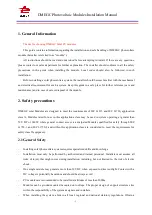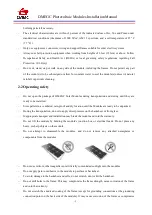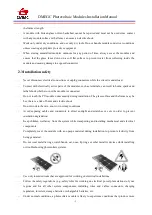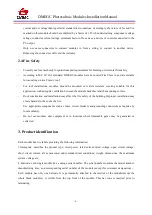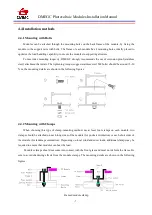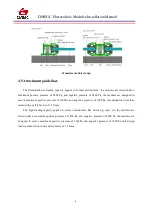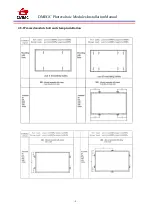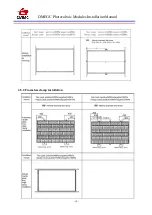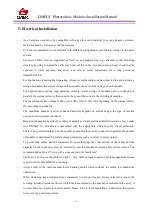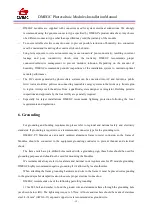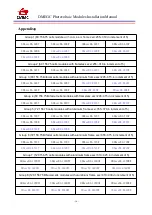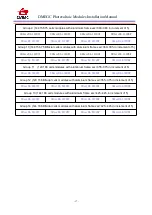
DMEGC Photovoltaic Modules Installation Manual
- 11 -
5. Electrical Installation
Any hardware used must be compatible with any other used material to avoid galvanic corrosion.
Defects caused by corrosions void the warranty.
It is not recommended to use modules with different configurations (grounding, wiring) in the same
system.
Excessive cables must be organized or fixed in an adequate way, e.g. attached to the mounting
structure by using non-metallic cable ties. Solar cables, connectors and junction boxes should not be
exposed to water exposure, and snow, and rain or water submersion for a long period of
time(IP65/67/68).
For applications requiring high operating voltage several modules can be connected in series to form a
string of modules; the system voltage is then equal to the sum of the voltage of each module.
For applications requiring high operating currents several strings of modules can be connected in
parallel; the system current is then equal to the sum of the current of each string of modules.
The maximum system voltage is 600 volts ,1000 volts or 1500 volts depending on the product family
DC according to standards.
The maximum number of series connected modules depends on system design, the type of inverter
used and environmental conditions.
Based on the maximum series fuse rating of module and local electrical installation code, always make
sure DMEGC PV modules are assembled with the appropriate string fuse for circuit protection.
There is no specific limitation on the number of modules that can be connected in parallel, the number
of modules is determined by system design parameters such as current or power output.
To prevent the cables and the connectors from overheating, the cross section of the cables and the
capacity of the connectors must be selected to suit the maximum system short circuit current. The
recommended cable is PV wire with a cross section of at least 4mm
2
.
Caution: do not secure the cables too tight. Any cable damage caused by cable management system
is not covered under DMEGC’s warranty.
Always refer to the cable manufacturer's bending radius which includes the radius just behind the
connectors.
When designing large modules arrays connected to a single inverter, always take into account the
resulting isolation resistance (Riso), which decrease increasing the number of modules in the array. A
too low Riso can results in inverter faults. Please refer to local regulations to determine the system
wires size, type and temperature.



